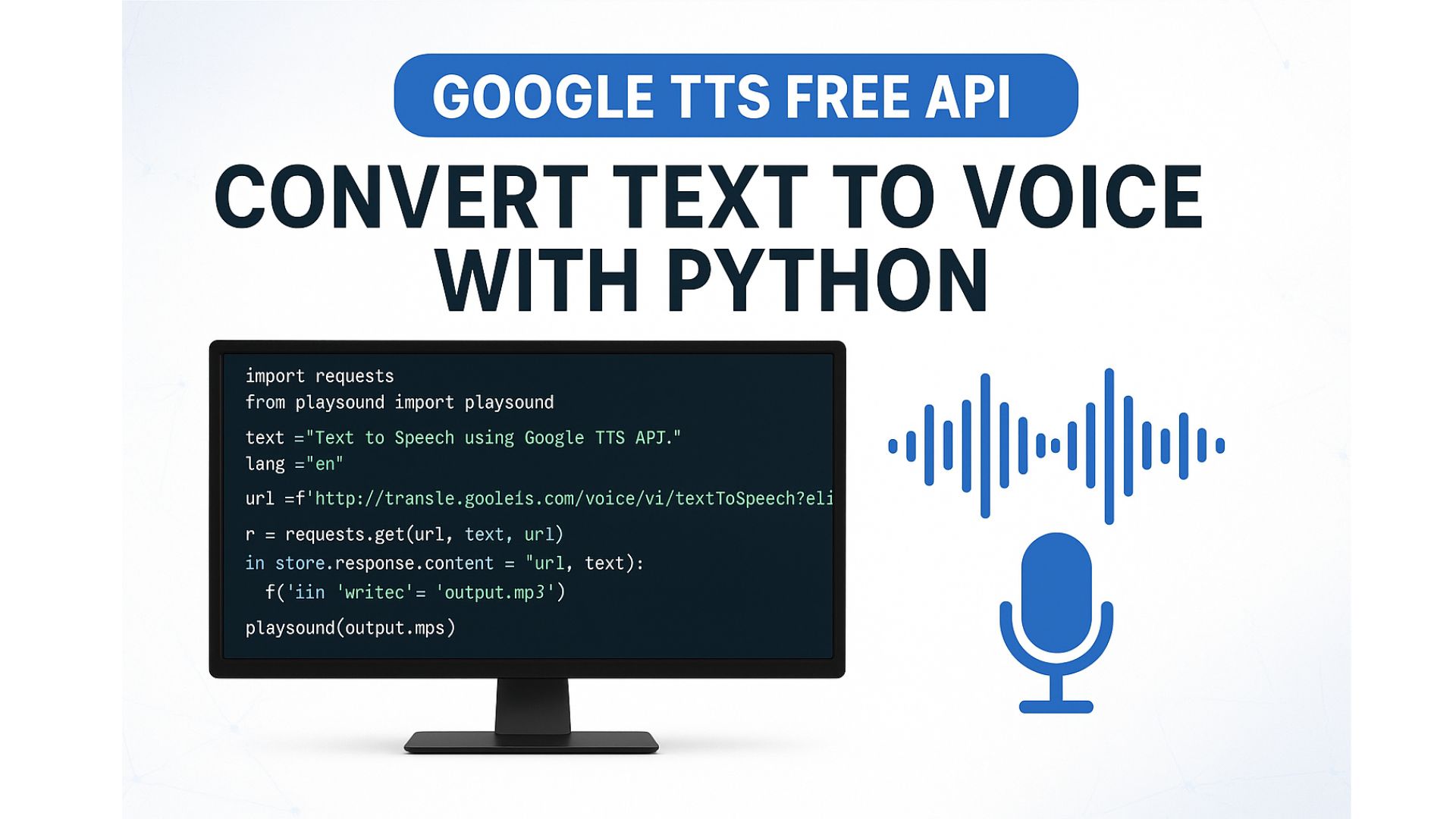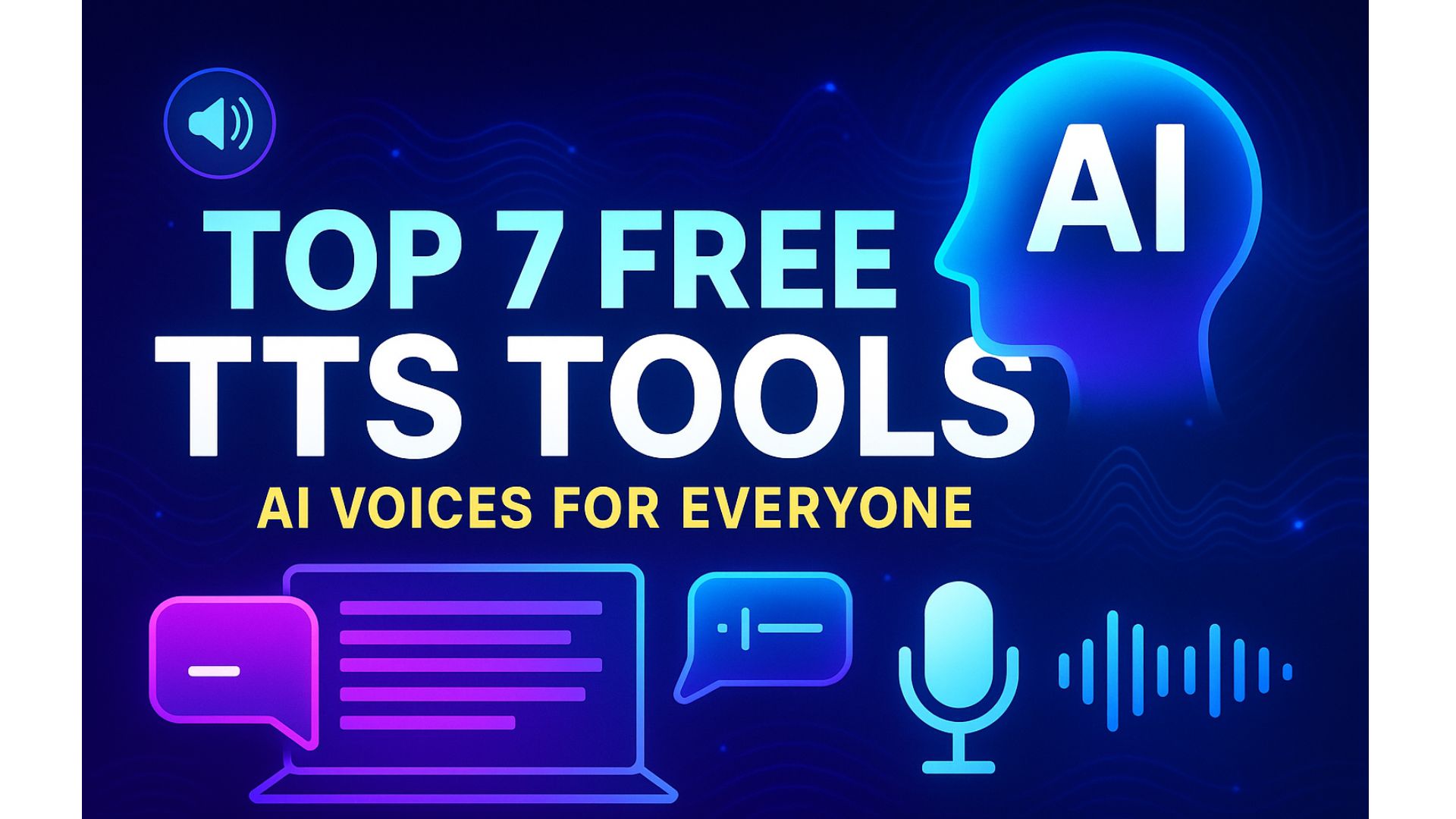How to Use Google Text-to-Speech API for Free (with Python)
2025-10-14 11:30 • 8 min read · 88 Views

🧠 Introduction
Text-to-Speech (TTS) technology allows you to convert any text into a human-like voice.
While many platforms charge for API access, Google’s Text-to-Speech API (gTTS) offers a completely free and easy way to generate realistic voices using Python.
In this article, you’ll learn how to:
- Use the gTTS library to convert text into audio,
- Split long texts automatically,
- Combine multiple MP3 files into one, and
- Play or download your generated speech.
⚙️ Step 1: Install Required Libraries
Let’s start by installing the Python packages:
gtts handles speech generation, and pydub helps merge multiple audio parts.
💬 Step 2: Example Code to Generate Speech
This script:
- Splits your text into chunks,
- Generates each part with Google TTS,
- Combines all audio files into one clean MP3 file.
🎧 Step 3: Try It Yourself — No Coding Needed
If you don’t want to code, you can convert text to speech directly online using our free tool:
You can:
- Paste any text,
- Choose your language,
- Download or listen instantly — completely free.
🧩 Step 4: Why gTTS Is Great
✅ 100% Free (no API key required)
✅ Fast and supports 30+ languages
✅ Easy to integrate with your projects
✅ Perfect for automation, YouTube narration, or audiobooks
🔍 SEO Tip for Developers
If you run a blog or app using TTS, add generated speech to your articles — it boosts accessibility and Google SEO ranking because users stay longer on your page.
🏁 Conclusion
Google’s free Text-to-Speech API is one of the easiest ways to bring your content to life.
Whether you’re creating an audiobook, chatbot, or just want to listen to your own text, gTTS is a simple, open-source solution anyone can use.
👉 Try it right now at ttsforfree.com
Frequently Asked Questions
Q: Is gTTS completely free?
A: Yes, gTTS is free to use for personal and educational purposes.
Q: Can I use gTTS for YouTube monetized videos?
A: Yes, but for commercial use or large-scale monetization, you should review Google’s licensing terms to avoid copyright issues.
Q: Does gTTS sound natural?
A: The voice is good for basic use, but not as expressive or realistic as advanced neural voices from Azure, ElevenLabs, or commercial TTS providers.
Q: Is there a character limit in gTTS?
A: Yes, long text needs to be split into smaller chunks. A common safe limit is around 100,000 characters per hour depending on usage conditions.
Was this article helpful?
Related Articles

Mẹo cải thiện chất lượng giọng TTS tự nhiên hơn (Miễn phí)
Hướng dẫn cách giúp giọng TTS nghe tự nhiên hơn: ngắt câu, chia dòng, hạn chế emoji và ký tự lạ. Tạo giọng AI mượt mà miễn phí với TTS For Free

How to Improve Your TTS Audio Quality (Using TTS For Free)
Learn simple tricks to make your text-to-speech sound more natural. Improve pacing, clarity, and pronunciation with punctuation and line breaks using TTS For Free.

Top 7 Công Cụ Text to Speech Tốt Nhất Cho Developer Năm 2025
Khám phá những công cụ TTS tốt nhất để thêm giọng nói vào ứng dụng hoặc website của bạn trong năm 2025.